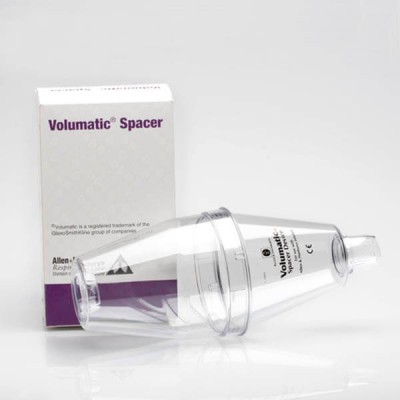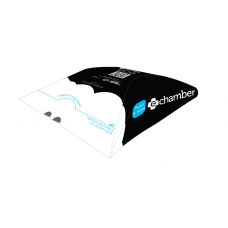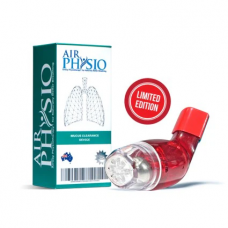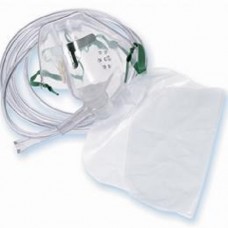When only the best will do!
Another Quality Product you can trust from Solutions Medical
Quality - Precision - Technology at Competitive Prices!!!
FEATURES:
Volumatic Spacer
If you are using a puffer to take your asthma medication, you should always use a spacer as well, regardless of whether you are taking your daily preventer or using your blue reliever during an emergency.
A spacer is a clear plastic container shaped like a football or a tube with a mouthpiece or mask at one end and a hole for an inhaler at the other. Spacers help to get asthma medication into your lungs. The medication is ‘fired’ from the puffer into the spacer device and is then inhaled through the mouthpiece or a face mask.
Note: Spacers can only be used with ‘puffer’ style inhalers
Why should I use a spacer?
More medication gets into your lungs than if you use a puffer on its own.
They reduce the local side effects of inhaled steroids in preventer medications, because less of the medication sticks in your mouth and throat
You don’t need to coordinate pressing your puffer and breathing in at the same time
Reliever medication via a spacer is at least as effective as via a nebuliser in anasthma attack, and you can take the medication faster and in a lower dose than with a nebuliser. This is because the spacer delivers the medication more effectively. This lower dose reduces the risk of side effects such as fast heart rate and tremor which can be caused by the reliever
Who should use a spacer?
Everyone who uses a puffer for their medication is recommended to use a spacer
Which type is best?
There are a range of spacers available, in different shapes, sizes and colours. There are two main differences: large volume and small volume.
Large volume spacers are an oval shape, and are bigger. These should be used only for adults or children over five years old, as younger children aren’t able to take deep enough breaths to empty the spacer out.
Small volume spacers are usually shaped more like a tube, or a cone. They are more convenient because they are smaller and so fit into handbags and schoolbags more easily. Children under five should use a small volume spacer. Many older children and adults also use small volume spacers because they are more portable.
Young children should use a face mask with their spacer (as they have trouble sealing their lips around a mouthpiece), but once they are over about two years of age you can start to introduce them to using a mouthpiece instead, depending on what they are comfortable with. Using a spacer with a mouthpiece means less of the medication gets stuck in the nose, so more goes into the lungs.
Some spacers only fit certain shapes of puffer. If you have been prescribed an accuhaler or a turbuhaler (which cannot be used with a spacer) you can speak with your doctor to find out if your medication is available in a puffer.
There are a few types of spacers that are ‘disposable’ which means they are made only to last a short time and cannot be cleaned. They may be made from plastic or paper, and they work well, but do not use them for any longer than advised by the manufacturer.
]
How do I use a spacer?
There are two techniques for using a spacer:
Deep breath technique
remove puffer cap, shake puffer well, then attach puffer to end of spacer
seal your lips around the mouthpiece (or put the mask over your child’s mouth and nose)
breathe out gently
fire one puff of the medication into the spacer
take a long, slow, deep breath in
hold your breath for at least 5 seconds, or as long as is comfortable
breathe out
repeat if you need more puffs of medication.
Four breath technique (best for children or in an emergency)
remove puffer cap and shake puffer well, then attach puffer to end of spacer
seal your lips around the mouthpiece (or put the mask over your child’s mouth and nose)
breathe out gently
fire one puff of the medication into the spacer
take a normal breath in
keeping your lips around the mouthpiece (or the mask in position), breathe out into the spacer
take another three breaths in the same way
repeat if you need more puffs of medication.
Both techniques are equally effective. The four-breath technique is usually best for children and is what you should use when you are breathless, or helping someone else in an asthma emergency.
Make sure you only put one puff of medication into your spacer at a time. If you put more than one puff in, the medication sticks together and then drops to the bottom of the spacer before you have time to breathe it in. This means you get less medication into your lungs.
You can ask your doctor, pharmacist or asthma educator to show you how to use your puffer and spacer.
How do you clean a spacer?
Before the first time you use your spacer and about every four weeks after that, you need to wash it. Take the spacer apart and wash it in clean warm water with dishwashing detergent.
Don’t rinse the bubbles off it or wipe it, just let it drip dry. The residue of the bubbles from the detergent puts a coating on the inside of the spacer. This stops the creation of static electricity inside, which can make the medication stick to the sides of the spacer instead of travelling through.
f you don’t clean your spacer, it won’t work as well, and the valve inside may not work either. Some spacers have a removable valve (a piece of rubber that you can take out and wash separately).
If you are using Tilade or Intal (types of preventer medications), you should wash your spacer more frequently. These medications are quite sticky, and build up faster than other medications.
Replace your spacer about every 12 months if you use it every day. If it breaks or cracks, get a new one straight away.
Community Spacers and Asthma Emergency Kits
Some places will have a spacer ready just in case there is an asthma emergency. This is common in schools, children’s services and some sporting clubs or workplaces.
There have been policy changes in 2012 around the use of community spacers which are now applied across all Asthma Foundations in Australia.
Asthma Australia recommends that all spacers should be used by one person only. This recommendation is based on NHMRC Australian Guidelines for the Prevention and Control of Infection in Healthcare (2010) which advises that medical devices that come into contact with mucous membranes or non-intact skin should be single use or sterilised after use. This means that once a spacer has been used, it should be given to the person who used it, or thrown away. They should not be washed and reused for another person.Spare spacers should always be available to restock the Asthma Emergency Kit.
While the risk of transmission of infection is small, first aiders must always follow infection control instructions.
For more information, contact your local Asthma Foundation on 1800 ASTHMA (1800 278 462).
|

 AUSTRALIA-WIDE SHIPPING $15
AUSTRALIA-WIDE SHIPPING $15





